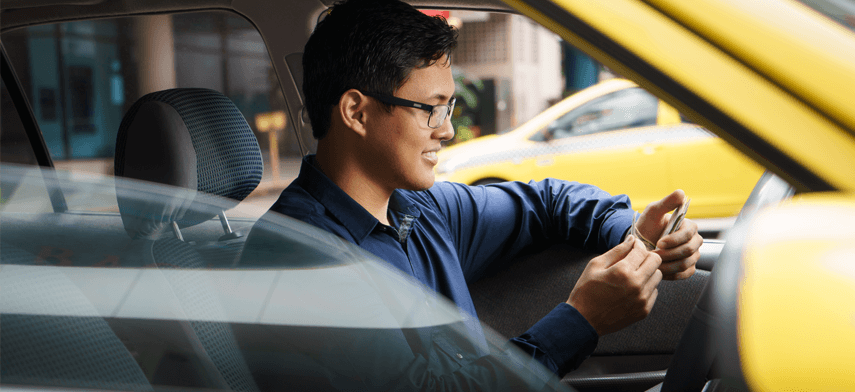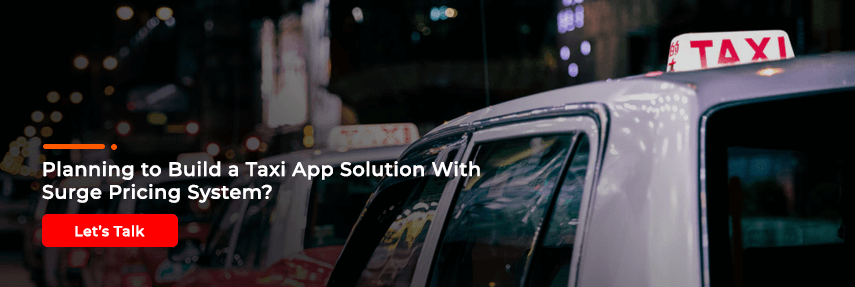Be it New York or New Delhi, the ‘surge pricing’ system garnered a lot of media attention and has been a hot debate topic in the last few years. On a simple note, surge pricing or dynamic pricing is a tool used by ridesharing companies when the number of ride requests surpasses the availability of cabs in a particular area.
However, there has been a lot of controversy around this pricing tactics when applied to the on-demand taxi services. This blog digs deeper into the surge pricing model and how it affects all stakeholders which include drivers, taxi aggregators, and commuters.
What is Surge Pricing?

Dynamic pricing in economics refers to a time-based pricing strategy in which business set flexible prices depending on the market demand. This type of pricing model is used by airlines, hotels, railways, etc. The same pricing model is applied to ride-sharing as well.
Taxi aggregators use a pricing algorithm that maps the demand-supply in a particular area and fix the rate accordingly. As a result, the cab fares rise when the ride request exceeds the number of cabs available in a particular area. At peak times, the on-demand cabs charge 3 to 8 times of the normal fare to cater the needs of the commuter. Also, the surge pricing system works during occurrences like bad weather, festivals, events, rush hour, etc.
How Does Surge Pricing Work?
There have been a lot of speculations over how surging price mechanism works in on-demand cabs. The logic applied is simple. When the supply becomes scarce relative to the demand, the price is multiplied in order to match supply with demand.
In the case of ridesharing, when the requests for cabs are higher than the number of available cabs at a specific location, the user will see a multiplier (2x, 3x, 1.5x etc.) to the standard rates. The multiplier increases as per the demand for the rides in the specific area of the commuter.
The algorithm checks the demand data after a specific time duration and the prices surge until the supply and demand reach equilibrium. Consider the example of Uber, a pioneer among on-demand cab service providers to introduce surge pricing. The automatic pricing algorithm of Uber checks the number of requests and available cabs at the location every five minutes. Whenever there is an imbalance between the number of riders and drivers, the base fare gets multiplied. This way, the cab aggregator is able to quickly connect the rider with the driver and ensure improved efficiency in the market.
The Need for Surge Pricing
Surge pricing is basically a market mechanism which is aimed at reducing the gap between the supply and demand. For on-demand cab service providers, it acts as an essential tool to match the supply and demand during peak times. It is a possible alternative to the ‘no cab available’ woes of the rider. It helps to improve efficiency and maximize the number of rides for the service provider.
It benefits cab aggregators because the price inflation will reduce the demand at peak times. Some riders may choose to travel to a different location or wait for a while for the price to come down. This, in turn, opens up an opportunity to those riders who need cab instantly and are ready to pay a higher fare. The service providers can ensure quicker pickup time as well as better customer experience for them.
Surge pricing model helps taxi cab aggregators complete as many rides as possible. When price inflation occurs, drivers get a notification about the surge prices at a particular area. They can quickly move to the specific location of surge pricing leading to increased number of cabs there. Apparently, the supply-demand will be balanced and the price becomes normal in some time.
Why is it Good for Drivers?

On an average, the profit ratio between drivers and cab aggregators equals 80:20. The same profit division applies during surge pricing as well, hence the drivers can take home a bigger sum if they are on roads then. These incentives are a major encouragement for cab drivers to be on roads as it contributes to their earnings. The surging pricing system is a boost for drivers to get back on roads during late nights, bad weather, peak traffic times, etc.
The top players in cab aggregation make it possible even for off-duty drivers to get alerts regarding surge priced locations nearby in the home screen of their phones. Thus, there will be more cabs on the location which makes it beneficial for commuters, drivers as well as the service provider.
No wonder that there are many cab drivers who prefer to be on roads during surge pricing only. As stated by a top executive of Uber, “Drivers are indeed motivated by price. By offering more money to drivers, they (the team) were able to increase the on-the-road supply of drivers by 70-80%, and more importantly, eliminate two-thirds of the unfulfilled requests.”
How it Affects Riders?
In a way, the surge pricing system works in the best interest of the commuter. They can view notification in the app when the prices are high. They can either choose to commute later or pay increased rates. The surge prices changes quickly and it will differ based on the location. Therefore, time and location are flexible for the riders in case they do not want to pay the surge price.
Moreover, it is not a must for the riders to pay the surged price as they are already notified about it. Basically, surge pricing opens up an option to pay more and travel during peak demand time.
The rider may get stranded on the road during instances when all available cars are taken at a specific location, say post an event or bad weather. With surge pricing system, ‘no cabs available’ will be rare occurrences. As explained before, there will be more drivers moving towards the surge price location and demand will go down due to the inflated price. Once the supply-demand balance is met, the price comes down to normal. Due to surge pricing, the riders can get cabs during an emergency situation by paying extra.
Challenges on the Road
Surge pricing has become more or less a lightning rod for criticism against cab aggregators since it has been put into action. The dynamicity of the price fluctuation is often unpredictable which stands as a roadblock for this system. Riders are uncertain about when the surge occurs or how much it may go up.
There is the notion that surge pricing is mostly a tool for cab aggregators for generating extra revenue by cross-subsidizing the usual fare during peak demand time. Also, there are debatable perceptions that cab aggregators create artificial scarcity. However, major players in the market, like Uber, view surge pricing as a tool to improve customer service. When the number of available cars is less, they surge their prices to attract more drivers.
The road is not smooth for the drivers as well. They ride to the specific locations that experience the surge pricing based on available data. When they reach the location, the surge price may get over. On the flipside, if they get a ride on surge prices, they may likely receive negative reviews from riders due to increased rates. It is a challenge for the drivers to maintain good rating while they accept rides during surge prices.
On the other side, neither commuters want to pay more nor do they want to be stranded on the roads. The fact is surge pricing do not last long. Riders can wait for a few minutes to hire the cab at the normal fare.
To tackle the woes of commuters, authorities have imposed caps for maximum surge pricing in some of the cities. Standardization of the pricing is a possible measure in order to curb the unpredictability involved in surge pricing.
Moreover, increased awareness about the surge pricing among drivers and riders is helpful in increasing its acceptability. When riders know when and how the price will surge, they will be able to make informed decisions. Eventually, the service provider will have more happy and satisfied riders.
Will Surge Pricing Stay?
As a concept, surge pricing does not seem to go anywhere in the future. It is widely being adopted by other on-demand industries as well. By using algorithmic decisions based on data, businesses find a new way to balance the supply and demand. As technology advances, it becomes easier to employ dynamic pricing system by tracking real-time data.
If done correctly and under regulations, dynamic pricing benefits all the stakeholders in the ridesharing ecosystem. At the end of the day, the surge pricing system ensures a safe ride-on-demand for the commuters by balancing supply and demand. It is reviewed often that surge pricing with maximum limits is beneficial for riders, drivers, and service provider alike.
Author's Bio

